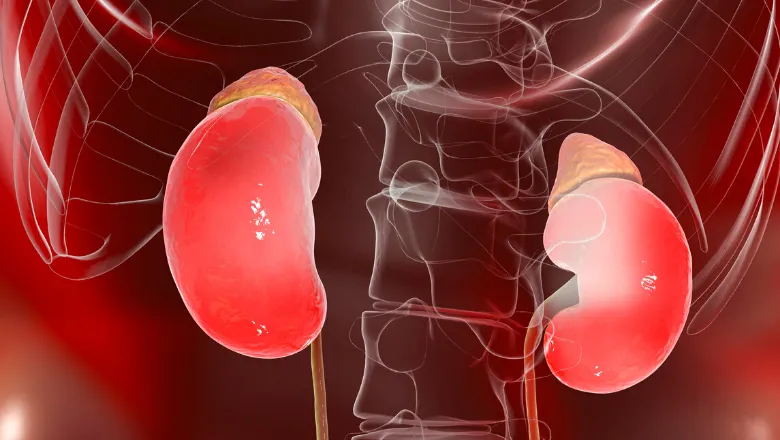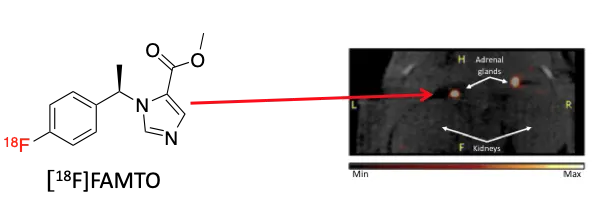If identified, a malfunctioning adrenal gland can then be removed by keyhole surgery, curing the disease and avoiding the chronic use of hypertension medication the patients would need for the rest of their lives. To date, however, the identification of malfunctioning adrenal glands is very difficult, error prone and invasive.
Dr Salvatore Bongarzone, Lead Author, School of Biomedical Engineering & Imaging Sciences
12 June 2020
Chemistry and biology researchers win Best Publication Award
Researchers from the School of Biomedical Engineering & Imaging Sciences have been awarded the Nuclear Medicine and Biology 'Best Publication Award 2019'.

A team of researchers, led by Professor Antony Gee within the School of Biomedical Engineering & Imaging Sciences, recently won the Nuclear Medicine and Biology ‘Best Publication Award 2019’.
The winning paper, ‘Development of [18F]FAMTO: A novel fluorine-18 labelled positron emission tomography (PET) radiotracer for imaging CYP11B1 and CYP11B2 enzymes in adrenal glands’, highlights multidisciplinary research which aims to provide a diagnostic tool to identify adrenal (suprarenal) gland malfunction.

When the kidneys are not working effectively due to the presence of a tumour, increased production of a substance called aldosterone causes high blood pressure. Adrenal gland tumours are found in all populations but have a higher incidence in Afro-Caribbean populations.
The research published in Nuclear Medicine and Biology presented a potential diagnostic solution for this clinical challenge.
A positron emission tomography (PET) scan is a non-invasive imaging test that uses a radioactive compound to reveal how organs, including adrenal glands, are functioning. The researchers looked at creating a new compound tagged with radioactivity which can be injected into the blood stream and selectively target the malfunctioning adrenal glands.
Using the new radioactive compound with PET imaging, it would be possible to diagnose the hypertensive patients with operable tumours so they can be offered a cure.
Dr. Bongarzone notes that whilst the compound is made with radioactive materials, the low amount of radioactivity that will be injected and the short time for the radioactivity to wear off makes this test not harmful.
The next stage of this research is translation from live animals testing to human trial.
The Nuclear Medicine and Biology Best Publication Award is an important distinction for the whole team. It is a great honour to have this recognition of our research.
Dr Salvatore Bongarzone, Lead Author, School of Biomedical Engineering & Imaging Sciences

